










By Linda Ligon, Family & Kids
Many processed foods contain artificial food dyes that give foods bright, vibrant colors. The dyes do not serve any purpose besides making food more visually appealing. However, due to the results of studies that possibly link the food dyes to increased hyperactivity, allergies and increased risks of cancer, the safety of these dyes is in question. Recently, one of the synthetic food dyes that had been linked to cancer in animal studies, Red No 3, was banned by the FDA. Here is an overview of the synthetic food dyes currently in use in the US and how to reduce the potential health impacts by avoiding their consumption.
Where do food dyes come from?
In ancient times, food dyes were made from natural sources such as fruits, minerals, plants, and vegetables. In 1856, the first synthetic food color, called mauve, was created from the by-products of coal processing. After this first food dye appeared, many others were soon created and used in cosmetics, drugs and food. However, when tested for safety by the USDA in 1900, many of the substances added to food colors, such as mercury, lead and arsenic, were found to be toxic. The food dyes of today are made from petroleum and are regulated by the FDA.
What food colors are approved for use in the US?
The food dyes that are currently FDA-approved include:
• Blue No. 1 (Brilliant Blue) This dye is used in ice cream, popsicles, and canned peas. There is some data that links this dye to increased hyperactivity.
• Blue No. 2 (Indigo Carmine) This dye is used in cereal, ice cream, baked goods and dairy products. Some animal studies have linked this dye to the development of tumors in male rats, but more research is needed.
• Green No. 3 (Fast Green FCF) This dye is used in salad dressings, drinks, canned
vegetables, ice cream, cereal, jello and sherbet. It is the least used of all the FDA-approved dyes. This dye is also used in cosmetics and medications, except for those used in the eye area.
• Orange B The only approved use for this dye is hot dog and sausage casings.
• Red No. 40 This dye is used in candy, sports drinks, condiments, and cereals. Some studies have linked this dye to increased ADHD or hyperactivity in children and to allergic reactions. Red No. 40 contains benzene, which is a known cancer-causing substance and animal studies have found large amounts of this dye causes tumor growth.
• Yellow No. 5 (Tartrazine) This dye is used in candy, soft drinks, chips, popcorn, and cereals.
• Yellow No. 6 (Sunset Yellow)
This dye is used in candy, sauces, baked goods, and preserved fruit. Both Yellow No. 5 and Yellow No. 6 have been associated with increased hyperactivity in some children and these dyes have sometimes been found to be contaminated with toxic chemicals.
Recently, the FDA banned Red No. 3 (Erythrosine). This dye is used in candy, popsicles, and cake-decorating gels. Studies have linked this dye to increased hyperactivity in kids and animal studies have shown that high doses of the dye cause thyroid cancer in male rats. Red No 3 had already been banned in Europe and had been banned for use in cosmetics in 1990. Manufacturers in the US have until 2027 to remove the dye from their products.
None of the artificial dyes have any nutritional value and more studies are needed to fully understand the health risks they pose. To reduce your family’s intake of artificial food dyes, limit the consumption of processed food and artificially colored drinks, and read food labels to spot hidden dyes.




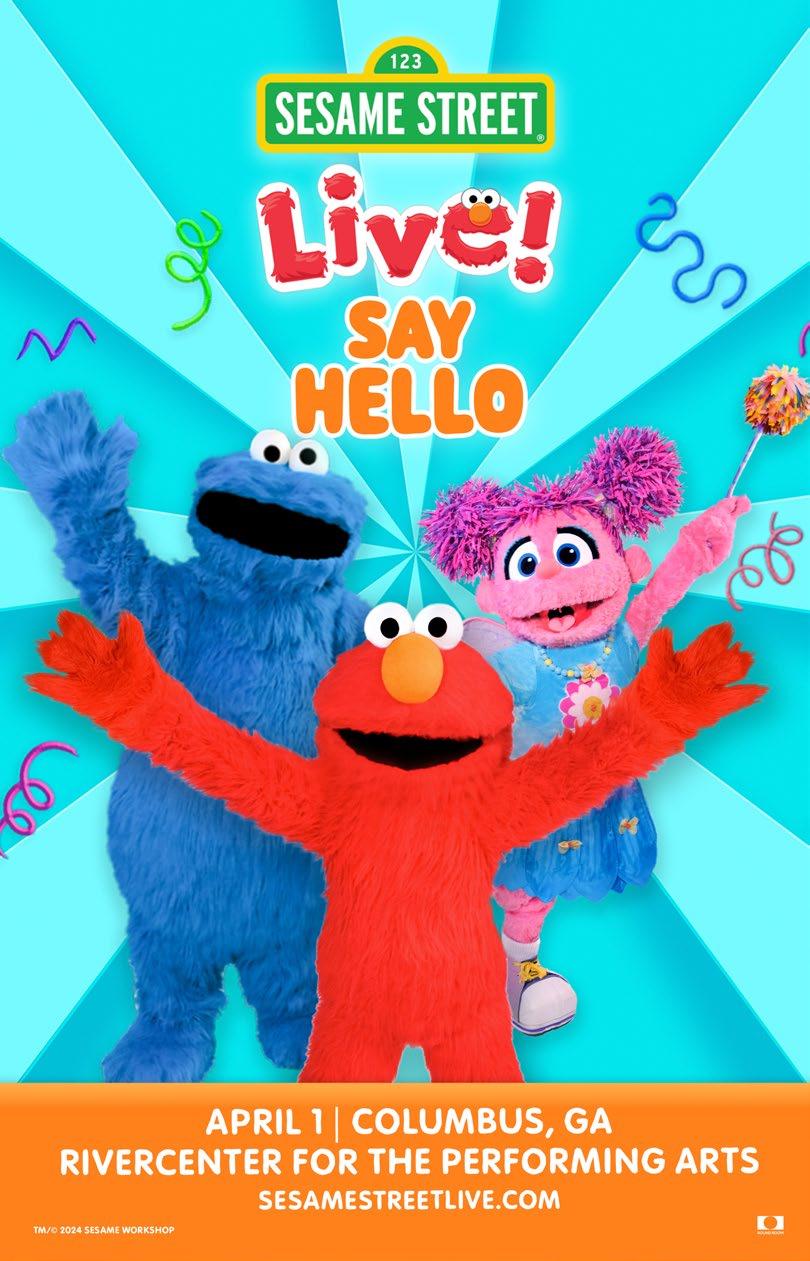
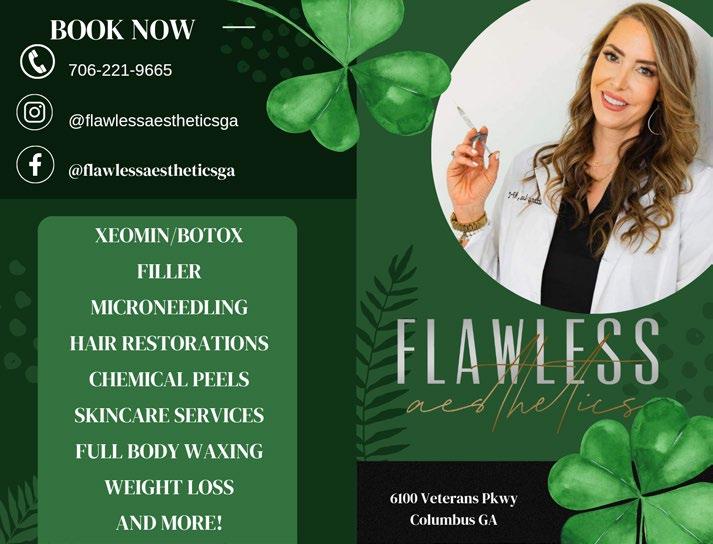












By Linda Ligon, Family & Kids
Participation in organized sports activities is an enjoyable way for kids to stay physically active and socialize with others. A study published in December 2024 in JAMA Network Open found that the benefits of team sports also include improving thinking skills and brain function.
The study compared kids who played team sports vs kids that participated in individual sports or did not play sports at all and found that kids who played team sports scored higher on tests of executive function. Executive function is the ability to organize and plan, focus on tasks, remember details and use information to make decisions. These are essential, valuable life skills.
In team sports, kids must assess the complexity of how to work together with others on the team and adjust to constantly changing situations, giving them plenty of opportunities to exercise executive function and show leadership. So what does this mean when you are considering sports sign-ups for your child?
If your child shows interest in a team sport, help him pursue it. Some kids enjoy a certain team sport but are not the best player and that is OK if he is enjoying and building his physical skills and thinking skills. Recreational leagues in your community can provide an opportunity to participate without being in a highly competitive environment. If you feel that a highly competitive team is not the best environment for your child, talk to other parents to see which leagues and coaches might be right for him.
If the most popular team sports, such as baseball and soccer, are not interesting to your child, consider alternatives, such as volleyball, ultimate frisbee or flag football. These sports allow your child to exercise physical and thinking skills as well as meet other kids. Sometimes our bias as parents can get in the way if we were hoping our child would enjoy baseball as much as we did. However, if your child enjoys the team sport, he is much more likely to feel an intrinsic drive to participate and succeed.
The Muscogee Roller Girls (MRG) is the Tri-City Area's only all-female, full-contact, flat track roller derby league. MRG is a not-for-profit organization and is committed to growing and promoting the sport of Roller Derby. The organization aims to bring together a diverse group of women to represent the community in regional athletic competition and adheres to the principles, guidelines, and regulations of the Women’s Flat Track Derby Association (WFTDA).
What is roller derby?
Roller derby is a sport that is played on quad roller skates on an oval track. The two teams have five skaters each. On each team, four of the skaters are the blockers and one skater is the jammer. The jammer scores points by getting through the opposing blockers. Play is separated into two 30-minute periods, and within those periods are two-minute units of play, called ‘Jams.’ The skaters wear protective gear, and skaters that engage in unsafe or illegal play are given penalties. The team with the most points at the end of the hour wins.

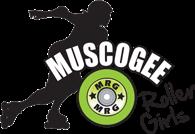
Where are the games played?
Roller derby games are a family-friendly, fast-paced event. The MRG have four home games this season. Games are at the Harris County Community Center in Hamilton, GA and the first home game is on March 15. Doors open at 4pm and games start at 5pm. Kids 5 and under are free. General Admission is $10 presale and $15 at the door. VIP Trackside Seating is $15 presale and $20 at the door.
How do you sign up for the MRG?
MRG currently has about 50 members. These include skaters, referees, Skating and Non-Skating Officials (NSOs). The minimum age is 18. The league is for female skaters but men are welcome to volunteer to be Referees and NSOs. No prior skating experience is necessary. New skaters are trained in a Bootcamp. The practices are twice a week, on Tuesdays from 6:30pm to 8:30pm and Sundays from 1-4pm at the Harris County Community Center in Hamilton. Joining the MRG is a great way to stay in shape and meet others in the community.
RESOURCES: www.ncbi.nlm.nih.gov/pmc/articles/PMC6659987/






by Christa Melnyk Hines
“Happiness is not something ready-made. It comes from your own actions.”
- Dalai Lama
We know that happiness is an emotion that can come and go. But how do we recapture that bubbly feeling amid the challenges and stresses of parenthood? Here are a few tips from moms for staying positive and feeling good.
Studies find that time spent bonding with friends boosts a woman’s level of oxytocin, a natural hormone that reduces stress. Check out mothers’ groups in your area if you are struggling to build a support network.
Women who make time to care for their bodies, enjoy a stronger self-image and feel more self-confident and energetic. Exercise, try to get adequate sleep, schedule regular massages and make healthy food choices to feel your best.
During the rush of the week, most of us throw meals together just to get our hungry crew fed. If you enjoy cooking, find a day when you can slow down and relish the preparation. The process of chopping and measuring ingredients is meditative and soothing.
Family life can be funny. Kids say hilarious things. Pay attention and write those gems down. Next time you need a lift, read them. Look at funny family videos, hang out with lighthearted friends, watch a silly movie or read a humorous book.
Studies find that people who lean on an inner belief system are happier. You don’t have to be religious to be spiritual. You can feel a connection to spirituality through helping others, nature, yoga, music, art, personal meditation or journaling.
In a gratitude study at Eastern Washington University, researchers found “that grateful individuals tend to be happy individuals, and that
grateful thinking improves mood.” Try writing down three things you are thankful for each day, or answering, “what can I be thankful for in this moment” when you feel challenged.
Whether you like surfing Pinterest, training for a 5K or simply taking a warm bubble bath, moments stolen throughout the week contribute to our overall sense of well-being.
Studies find that dancing boosts the body’s feel-good endorphins. Dancing has even been found to reverse depression and increase self-confidence. Jessie Mallicoat, a mom of three, says, “If I’m in a bad mood, I put on some ‘dancy’ music and it usually helps.”
Moms who are happier make conscious decisions on a daily basis about who and what is allowed into their lives. Switching to this way of thinking is empowering. You don’t have to be harsh to accomplish this goal. Politely decline invitations that don’t fit with your priorities and limit interactions with negative individuals.
Seek reliable childcare in order to feel secure pursuing personal interests, maintaining routine health check-ups and for fellowshipping without the kids. A positive marriage contributes to the overall emotional health and happiness of your family.
Parenting philosophies that work well in one family, may not work well in another. Thanks to the influx of information at our fingertips, parents have no shortage of advice. Decide which strategies make sense for your family. And beware of spending too much time on social media if you’re starting to feel like you don’t measure up. “Being happy with yourself and how you parent is key to accepting other moms and how they parent, which creates a more supportive parenting community all around,” says Mandy Yokim, mom of two.
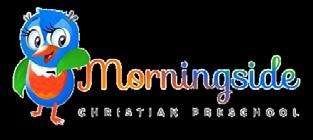





By Linda Ligon, Family & Kids
When it comes to diets, there are many different plans out there. Some just count calories while others also track nutritional elements called macronutrients or ‘macros.’ Here is why putting in the extra effort to track macros may be beneficial to help you reach weight goals.
There are three categories of macronutrients – proteins, carbohydrates and fats. When you track macros, you are keeping a log of how many of each of these you consume daily. Each of the three categories is essential and your body cannot function without them.
• Carbohydrates: Carbohydrates are broken down into glucose and either used immediately by the cells for energy or stored in the liver as glycogen. Your body uses both glucose and glycogen for high-energy exercise.
• Protein: This macro is used to build muscle, create enzymes that enable chemical reactions in the body and is needed to create hemoglobin. Hemoglobin transports oxygen to the cells in your body.
• Fat: This macro is necessary for both nerve and brain health. It is more calorie-dense than other macros and can be a more efficient and longer-lasting fuel source than carbs.
The amount of each you should consume depends on your age, activity level, height and weight and your weight goals. A registered dietitian can help you determine what your daily ratios should be, or try online apps such as My Fitness Pal, MyMacros, and others. If you want to lose weight, reduce your calorie intake by 15–25% mainly from carbs. If weight gain is the goal, increase calories by 5–15%.
Tracking macros can help you structure your diet plan and eliminate unnecessary calories from your diet. You are more aware of where your calories are coming from and how consuming them makes you feel. This awareness of what you eat can also help you select nutritious foods. For example, eating enough quality protein keeps you feeling full longer, and choosing complex carbohydrates over sugar can help prevent a ‘sugar crash.’ Before starting a new diet, consult your healthcare provider to ensure it is safe for you.
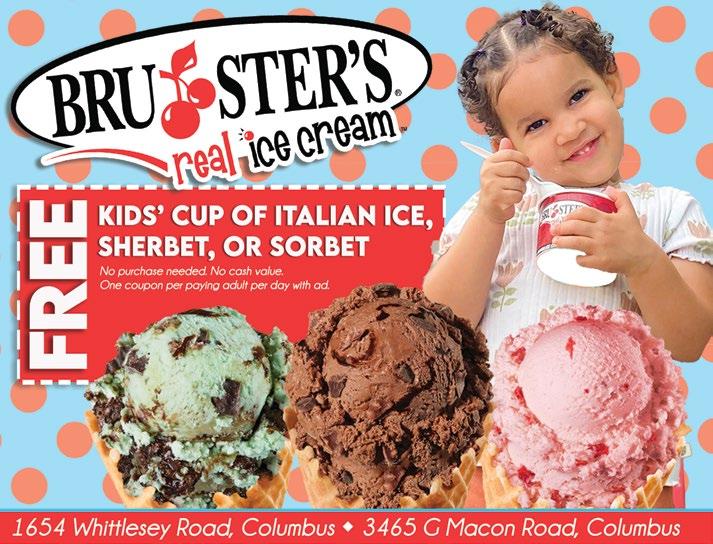

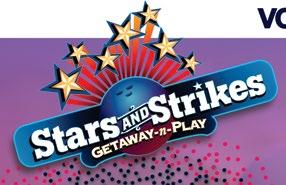















These homemade fruit roll-ups are one of our favorite homemade treats for kids. These are so easy to make and only require a few ingredients! These are a healthier option than store-bought.
Preheat oven to 170 degrees Fahrenheit (or the lowest temperature your oven will go). Line a large (17×12 inch) rimmed baking pan with parchment paper or a silicone baking mat. Rinse berries and remove stems from berries, if necessary. In a blender or food processor, add the berries. Add honey and lemon juice and then blend until smooth. For a smooth finish, pour puree through a fine mesh strainer to remove seeds. Pour pureed fruit onto baking sheet and spread evenly over the entire pan. Place pan in oven and bake for 5-6 hours, rotating the pan halfway through the drying process. Remove from oven when the puree has set and is no longer sticky. Allow the pan to cool completely. If you used a silicone baking mat, gently peel the cooled fruit leather and transfer onto a large sheet of wax paper. Cut the paper-lined fruit leather into long strips and roll. Store fruit roll-ups in an airtight container for up to 2 weeks.





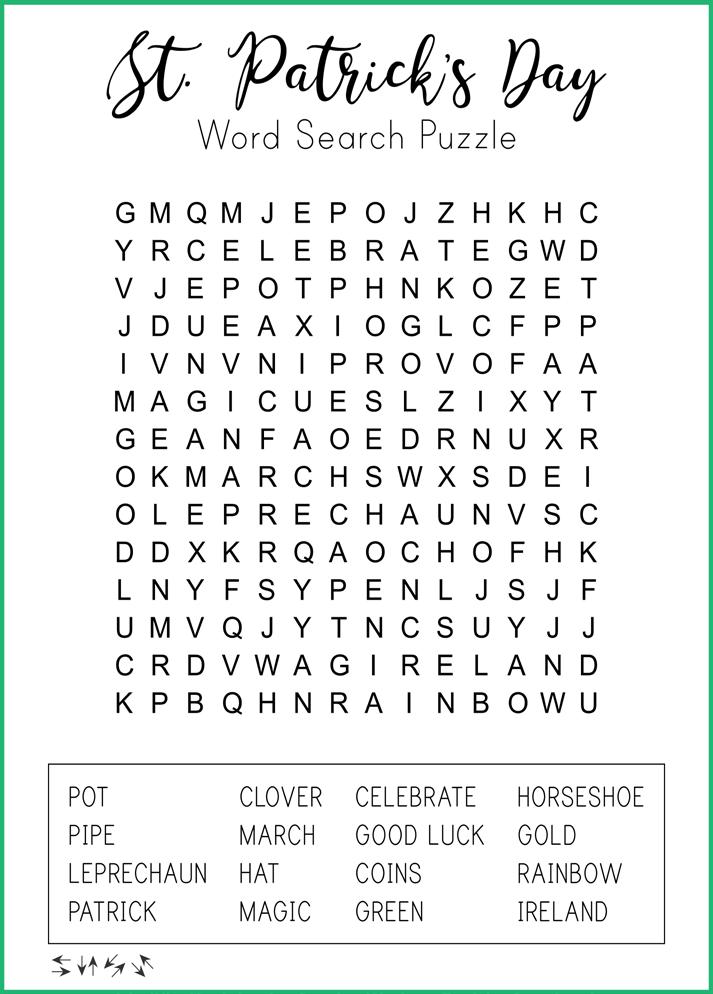
By Erikca Hall, Library Associate, Columbus Public Library
Looking for an easy way to keep your child engaged with reading? eRead Kids offers instant access to more than 15,000 children’s eBooks and eAudiobooks—all free with your Chattahoochee Valley Libraries card. From picture books and beginner chapter books to fascinating nonfiction, this digital collection makes it simple for kids to explore stories anytime, anywhere.
One of the standout features? Many books are available in both eBook and eAudiobook formats, allowing kids to follow along with the text as they listen to a narrator. They can slow down the audio or revisit previous sections, helping them build confidence and comprehension at their own pace.
Here are a few great reads available right now on e-Reads Kids:
The House at Pooh Corner by A.A. Milne
Join Winnie the Pooh, Tigger, and friends on their adventures in the Hundred Acre Wood. Told through a series of short stories, this classic is perfect for bedtime reading or for reluctant readers who benefit from shorter
chapters. The audiobook version includes sound effects and music, making the experience even more immersive. Recommended for ages 3-7.
Juneteenth: Our Day of Freedom by Sharon Dennis Wyeth, illustrated by Kim Holt
This beautifully illustrated nonfiction book introduces children to the history and significance of Juneteenth, the day that marked the end of slavery in the United States. It’s a powerful, engaging way to teach young readers about an important part of American history. Recommended for ages 5-7.
Winter Wishes: Disney Princess by Apple Jordan, illustrated by Elisa Marrucchi
Perfect for early readers, this story brings together favorite Disney princesses in a magical winter adventure. With simple sentences, beginner vocabulary, and repetition, this book helps young readers practice key skills while enjoying a fun, familiar story. Recommended for ages 5-8.
Getting started with eRead Kids is easy! Just visit cvlga.org to access these titles and thousands more—all free with your Library card.
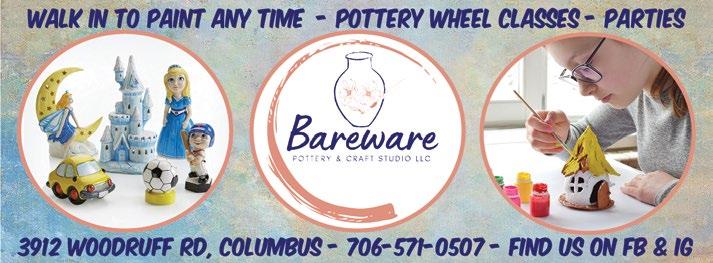




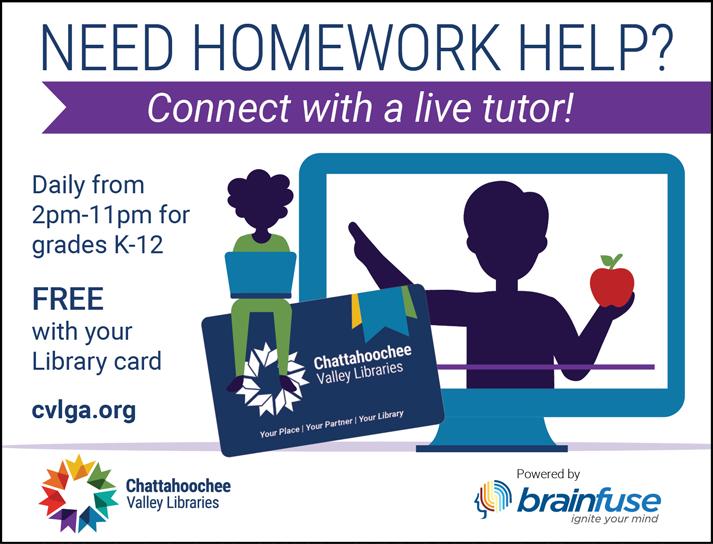
By Linda Ligon, Family & Kids
Wolff-Parkinson-White Syndrome (WPW) is a congenital heart condition that involves the electrical pathways of the heart. In rare cases, WPW has been associated with sudden cardiac death in children and young adults.
The heart has four chambers, with the upper two chambers referred to as the atria and the lower two chambers referred to as the ventricles. During fetal development, the heart starts out as a tube-shaped group of muscle tissue that then separates into four chambers. After this separation, there is no longer any muscle tissue connecting the atria and the ventricles. Instead, electrical impulses originate in a group of cells called the sinus node in the right atrium, excite both atria, and then travel to the ventricles through a group of cells called the AV node. The AV node slows and helps ‘filter’ the electrical impulses.
However, someone with WPW has an extra electrical pathway in the heart, caused when a section of muscle tissue connecting the atria and ventricles remains during fetal heart development. This creates an ‘accessory’ pathway
for electrical signals that is outside the normal electrical system of the heart that connects the atria and the ventricles. The electrical signals may bypass the AV node or even travel back from the ventricles to the atria, which can cause an abnormally fast heart rate and abnormal, uncoordinated heart rhythms.
The common symptoms of WPW include rapid, pounding or fluttering heartbeats, chest pain, difficulty breathing, feeling lightheaded, fainting and anxiety. Episodes of fast heartbeat can begin suddenly and may last only a few seconds or for hours. Infants with WPW may have additional symptoms such as blue or gray skin, lips and nails, rapid breathing, restlessness and poor eating. WPW is one of the most common causes of rapid heart rate problems in infants and children. Doctors use tests such as an electrocardiogram (ECG) to help diagnose WPW.
It is important to seek care if someone experiences a rapid heartbeat. Call 911 if someone is having symptoms of chest pain, difficulty breathing or the sensation of a pounding or fast heartbeat for more than a few minutes.

1
Artful Babies. 10:30am. Ages 6-24mo. The Columbus Museum; 706-748-2562, ext 6520
1 The Columbus Ballet: Myths, Legends and Folklore. 7-8:15pm. Rainey-McCullers School of the Arts; 706-507-8367
1-2 Agatha Christie’s Spider’s Web. 7:30pm. Family Theatre; 706-431-3752
1-2 Bob Marley’s Three Little Birds. Sat 11am, Sun 2:30pm. $18-$21. Springer Opera House; 706-327-3688
3 Family Fun Night: DIY Puppet. 4pm. Columbus Library; 706-243-2813
4 Pony Bead Party. 4pm. Ages 5-12. Columbus Library; 706-243-2813
4 Little Sprouts. 10am. $5-$7. Ages 3-5. Columbus Botanical Garden; 706-327-8400
4 Artful Babies. 10:30am. Ages 6-24mo. The Columbus Museum; 706-748-2562 ext 6520
4Celestial Virtuosity: Music Under the Dome Series. 5pm. $8. Coca-Cola Space Science Center; 706-649-1477
5-15 J4K Consignments Sale. Times vary. 3201 Macon Rd, Columbus; 706-587-1819
6 Simple Steps: Play. 10am. Ages 2-5. South Columbus Library; 706-683-8805
6 Valley Healthcare Medical Mobile Van. Families. 11am-1pm. South Columbus Library; 706-683-8805
6 LEGOS® in the Library. Families. 3pm. Columbus Library; 706-243-2813
7-9 Jesus Christ Superstar. Times vary. $21-$56. Springer Opera House; 706-3273688
8 Mini Makers. 10:30am. Ages 2-4. The Columbus Museum; 706-748-2562 ext 6520
8 Read Across America Celebration. Families. 11am. N. Columbus Library; 706-748-2855
8 Astronomy Night. 6pm. Coca-Cola Space Science Center; 706-649-1477
9 Family Market & Kids’ Day. 1-5pm. $8-$12. Columbus Botanical Garden; 706-327-8400
10 Creative Kids Theatre. Ages 5-12. 4pm. Columbus Library; 706-243-2813
11 Mini Makers. 10:30am. Ages 2-4. The Columbus Museum; 706-748-2562 ext 6520
11 After School Art Break. 2:30-4:30pm. Ages 5-10. Columbus Museum; 706-7482562 ext 6520
11 Pony Bead Party. Ages 5-11. 3pm. South Columbus Library; 706-683-8805
11 Pony Bead Party. Ages 5-12. 4pm. Columbus Library; 706-243-2813
11 Tabletop Tuesday. Teen. 4pm. South Columbus Library; 706-683-8805
11 The Sleeping Beauty. 7:30pm. $35-$85. RiverCenter; 706-256-3612
12 MAMA B.E.A.R.S. Breastfeeding Support meeting (Part 2). 12:30pm. Columbus Pediatric Assoc; 706-221-4602
12 MomCo of First Baptist Church. 6-7:30pm. First Baptist Church, Columbus; odonawhiddon@gmail.com
13
Budding Naturalist. 5:30pm. $5-$7. 1st-5th grades. Columbus Botanical Garden; 706-327-8400
13 Simple Steps Storytime: Family. 10am. Ages 0-5. S.Columbus Library; 706-683-8805
13 LEGOS®. Families. 3pm. Columbus Library; 706-243-2813
13-16
Jesus Christ Superstar. Times vary. $21-$56. Springer Opera House; 706327-3688
14
Postpartum Group Circle. 11am. Columbus Library; 706-243-2813
14
Culture Quest: All Things Otaku. Families. 4pm. Columbus Library; 706-243-2813
14-15
River Dragons Hockey. Times vary. Columbus Civic Center; 706-653-4460
15 Family Saturday. 10am-Noon. The Columbus Museum; 706-748-2562 ext 6520
15 Uno, Dos, Tres Craft! 3pm. Ages 4-8. RSVP. Mildred L. Terry Library; 706-243-2782
15 Columbus Princess Day. 10am. $25-$26. Columbus Trade Ctr; eventbright.com
16 Paint Party. 1:30-3:30pm. Ages 12+. $25. CVLRC, 900 Front Ave; 706-223-0932
17Leprechaun Exploration Bike Ride. 1-3pm. $5. All ages. Bring your bike, skates, strollers & scooters. Woodruff Riverfront Park; 706-223-0932
17Concert: United States Navy Band. 7:30pm. RiverCenter; 706-256-3612
18 Pony Bead Party. 4pm. Ages 5-12. Columbus Library; 706-243-2813
19 MAMA B.E.A.R.S. Breastfeeding Support meeting (Part 1). 5:30-7pm. Columbus Pediatric Assoc; 706-221-4602
19 Mean Girls. 7:30pm. $59+. RiverCenter; 706-256-3612
20 Harlem Globetrotters 2025 World Tour. 7pm. Columbus Civic Center; ticketmaster.
20 LEGOS®. Families. 3pm. Columbus Library; 706-243-2813
20 Simple Steps Storytime: Family. 10am. Ages 0-5. S. Columbus Library; 706-683-8805
20-23 Jesus Christ Superstar. Times vary. $21-$56. Springer Opera House; 706327-3688
22 Midland Commons & SFS Spring Fling Market. 11am-3pm. Midland Commons; 706987-3723

PROVIDED IN PARTNERSHIP WITH:

22
CSO Open Rehearsal. 2:30pm. Free. All ages. RiverCenter; 706-323-5059
22 CSO: Mostly Mozart. 7:30pm. $50. RiverCenter; 706-256-3612
22 Kids in the Kitchen. 11am. North Columbus Library; 706-748-2855
25 Bubble Party. 3pm. Families. South Columbus Library; 706-683-8805
25 Pony Bead Party. 4pm. Ages 5-12. Columbus Library; 706-243-2813
25 Music Therapy: Mental Wellness Playlist. 4:30pm. Columbus Library; 706-2432811
26 Garden Play + Open Fire Cooking. Noon-1:30pm. Ages 4-15. Explore the Community Garden, bring a picnic or something to cook over the fire. CVLRC; 706-223-0932
26 Seedling Storytime. 10-11am. $7. Columbus Botanical Garden; 706-327-8400
26 MAMA B.E.A.R.S. Breastfeeding Support meeting (Part 2). 12:30pm. Columbus Pediatric Assoc; 706-221-4602
26 MomCo of First Baptist Church. 6-7:30pm. First Baptist Church, Columbus; odonawhiddon@gmail.com
27 Simple Steps Storytime: Family. 10am. Ages 0-5. S. Columbus Library; 706-683-8805
27 LEGOS®. 3pm. Families. Columbus Library; 706-243-2813
28 Stitch by Stitch: Yarn, Needles, and Hooks Crafting Circle. 3pm. All ages. RSVP. Columbus Library; 706-243-2813
28-30 River Dragons Hockey. Times vary. Columbus Civic Center; 706-653-4460
29 Spring Kickoff Food Truck Fest. 11am4pm. Bluebelle Local Mercantile; 706-3271181
29 Spring Food Truck Festival. 11am-5pm. $5. Woodruff Riverfront Park; visitcolumbusga.com
29 Spring Break Hair Wraps. Open Play. Noon-3pm. $10/child. CVLRC, 900 Front Ave, 706-223-0932
29 Concert: Kaleidoscope. 7:30pm. $22$35. RiverCenter; 706-256-3612
31 Throwback Spring Break Cinema. 2pm. Families. Columbus Library; 706-243-2813
MONDAY
Simple Steps Storytime. Babies & Toddlers (Ages 0-36mo.) 10am. Columbus Library; 706-243-2813
TUESDAY
Simple Steps Storytime. Babies & Toddlers (Ages 0-24 mo.) 10am; Preschoolers (Ages 3-5.) 11am. North Columbus Library; 706748-2855
Get On Board With Board Games: Chess & More. Families. 4:30pm. Mildred L. Terry Library; 706-243-278
WEDNESDAY
Simple Steps Storytime. Preschoolers (Ages 3-5.) 10am; Babies & Toddlers (Ages 0-36 mo.) 11:15am. Mildred L. Terry Library; 706243-2782
Discovery Hub. Ages 3-5. 11am. Columbus Library; 706-243-2813
Story Time with Grammy Trish. 11am. Columbus Bound Bookshop; 706-243-1034
Kids’ Corner. 4pm. Columbus Library; 706243-2813
THURSDAY
Simple Steps Storytime. Family. Ages 0-5. 10am. Columbus Library; 706-243-2813
Toddler Tales. 10am. Barnes & Noble; 706653-7880
Sight Words Support K3. 3:30-5:30pm. Mildred L. Terry Library; 706-243-2782
FRIDAY
Simple Steps Storytime: Rhythm & Rhyme. Ages 0-5. 10am. Columbus Library; 706243-2813
Fun Fridays. Ages 5-12. 2pm. North Columbus Library; 706-748-2855
SATURDAY
Toddler Time. 10am-Noon. $10. Ages 5 and under. Launch Trampoline Park; 706-2218680
Nature Play. 10am. Oxbow Meadows; 706507-8550
Please call ahead to confirm event dates, times and age-appropriateness, in case changes were made after the info was obtained.
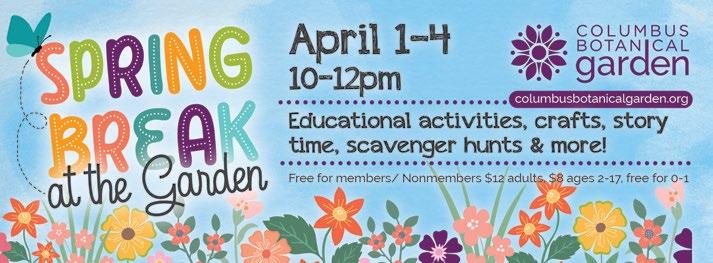


By Linda Ligon, Family & Kids
In today’s culture, there is a great emphasis on ‘staying positive’ and placing aside sadness without acknowledging that it is how you feel. This cultural focus on positive feelings can make it feel uncomfortable to discuss sadness or allow others to see you experience sadness.
However, sadness is a natural human emotion, and it is considered to be one of the four key main emotions, with the other three being fear, anger and happiness. Here are some reasons why feeling sadness and addressing the root cause of this emotion, instead of dismissing it, is beneficial and helps us adapt to what is happening in our lives.
To start with, it needs to be established that by sadness, we do not mean the entire grieving process or the persistent, long-term sadness of depression. By sadness, we mean the temporary feeling experienced when someone lets us down or we experience a setback. Think of it as a moment similar to a solar eclipse, where the moon covers the sun and we are in a shadow. The condition is temporary, and after some time, we are back to the full brightness of day. Sadness is the opposite of happiness. To fully appreciate happiness, we must enter the temporary shadow of sadness, when it occurs and deal with it rather than rejecting emotion altogether.
By experiencing what sadness feels like, you are better able to empathize and understand others. It is hard to help others identify and cope with sadness if you avoid it and have not allowed yourself to experience it.
Feeling sad provides an opportunity for time alone to process what has happened and look inward to learn more about ourselves. Sadness should not be dismissed as a sign of weakness, as it can help us identify what we truly value and motivate us to make needed changes.


It is not easy to see your child experience sadness and you may feel like you just want to ‘fix’ whatever is wrong. However, your role is to help your child learn to cope with sadness and build resiliency. He will need to learn to discern what triggered sadness, learn from the experience and then create a path forward.
The first step is to empower your child to recognize sadness. Try giving your child examples, such as ‘I felt sad yesterday when I found out my friend is going to another city.’ When you notice something may be bothering your child, address it by saying something like, ‘I see you have been crying, it looks like you feel sad.’ Reading books about sadness and emotions and asking your child how he thinks the main character is feeling can also help your child understand and label sadness.
While you cannot ‘fix’ sadness, you can be there for your child and listen to him explain what triggered the sad feeling. Encourage him to explore what triggered the sad feelings and identify any positive changes he can make going forward. Once he is ready to start feeling better, suggest some coping techniques he can use, such as taking some deep breaths, playing outside, journaling or drawing pictures.
Let your child know you are there to support him whenever he needs help with his emotions. However, also let your child know he can seek help from another trusted adult, such as the school counselor, when he needs to discuss anything he is uncomfortable discussing with you.
Seek professional help if your child continues to have difficulty managing his emotions despite your best efforts to assist him or has thoughts of harming himself or others.

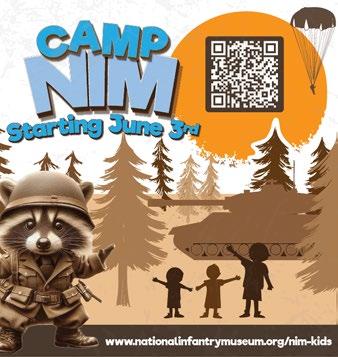




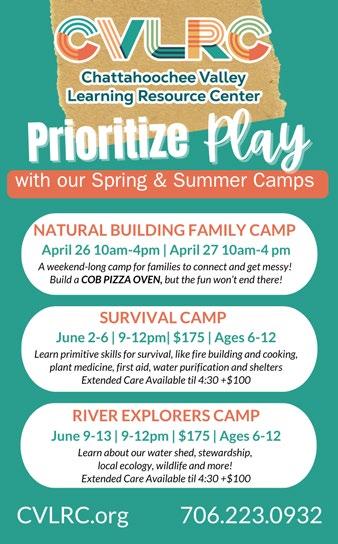




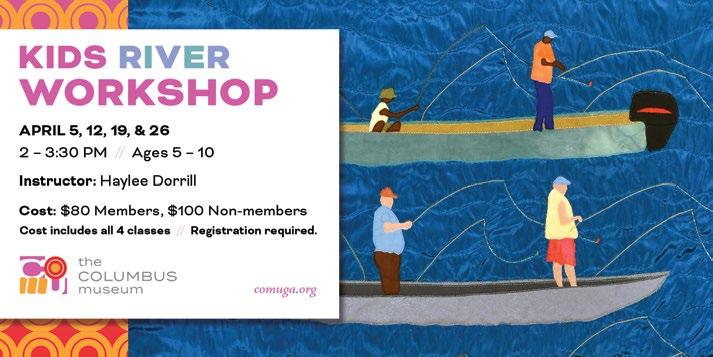



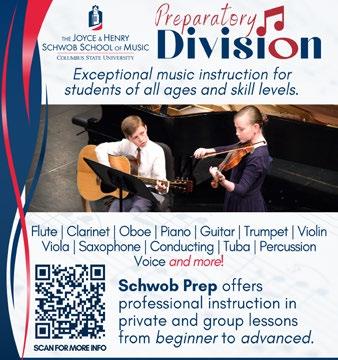


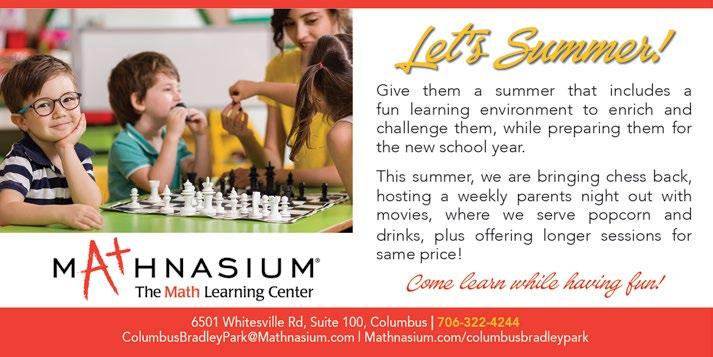



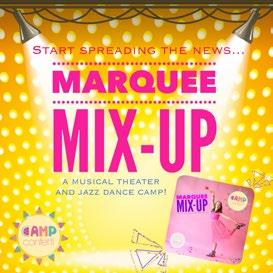
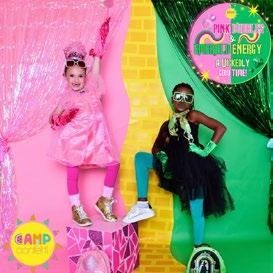






Saturday & Sunday
11am to 5pm
March 8th & 9th
March 15th & 16th
March 22nd & 23rd







The best part about making your own dryer sheets is that they’re reusable to save you money. Plus, you’ll also be removing lots of harmful chemicals from your laundry! So, making these simple DIY dryer sheets are a win-win.

Cut scraps from fabric into a similar size of standard dryer sheet. Grab your jar and mix the water and vinegar inside until almost full. Now it’s time to add your essential oils. Feel free to use any of your favorite scents. For a pint-size jar, use a






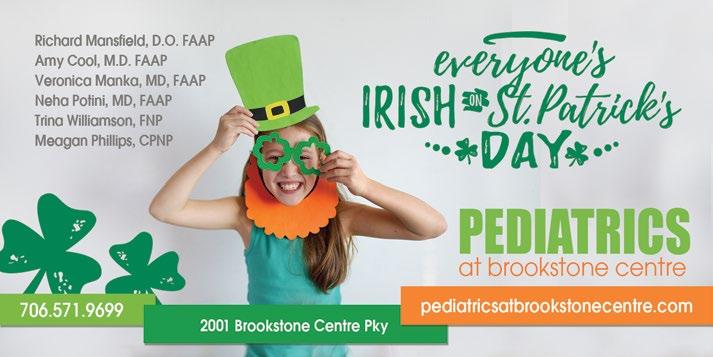

With deals this good, save the mess and dine out!
MONDAY
Barberitos
Free kid’s meal with adult entrée after 4pm
Sapo’s
5-8pm: Free kid’s meal with adult entrée
The Office
4-9pm: Kids 12 and under get a free kid’s meal with each adult entrée. Dine in only.
Tuesday
Chicken Salad Chick
Free Little Chick Meal with purchase of adult meal
Denny’s
4-10pm: Up to two free kids entrées with adult entrée for kids 10 and under
Ruby Tuesday
5-10pm: Kids 12 and under eat free with adult entrée
wednesDAY
Your Pie
Kid’s meal $1.99 (pizza, drink & gelato) w/ adult meal
Red Robin
Kid’s meal $1.99 w/ adult meal for kids 11 and under
thursDAY
Tuesday's Street Tacos & Burritos
Free kids meal with adult purchase; dine-in only
friday
Denny’s
4-10pm: Up to two free kids entrées with adult entrée for kids 10 and under
sunday
The Simple Greek
Kids 12 & under get half-off kids bowl with purchase of regular size bowl. Not to be combined multiple days
219 On The Lake
5-9pm: Kids eat for $2.19 on kids menu (M-TH)
Bruster’s Ice Cream
Kids under 40” get free baby cone
McAlister’s
Kid’s meals are $2.79 with dine-in order
The Food Mill
Kids receive half off a breakfast egg and cheese biscuit with the purchase of one full price breakfast item (M-F, 9-11am)
All locations are Columbus, GA unless noted. Specials are subject to change without notice, so please verify them directly before dining. Send kids deals to Tammy@FamilyAndKidsGA.
By Dr. Eddie Beal, MD, ESQ, Beal Wellness
Life gets busy, doesn’t it? Between work, school, sports practices, and the never-ending to-do lists, it can feel like there’s barely time to catch your breath, let alone make sure your family is thriving. But here’s a question worth asking: what if you could strengthen your family, make life a little easier, and give your kids an edge for the future— all at the same time?
That’s where mental health comes in.
I’m Dr. Eddie Beal, a psychiatrist and the founder of Beal Wellness. Over the years, I’ve seen how focusing on mental health can transform families. It’s not about “fixing” anything; it’s about building stronger relationships, better communication, and creating a foundation that helps everyone in the family shine—especially the kids. Let me share a few ways therapy can make a difference.
Ever feel like your family is having the same arguments over and over? Or like no one’s really on the same page? You’re not alone. A lot of family conflict comes down to communication— what’s said, what’s left unsaid, and how we say it. Therapy gives families tools to talk openly, listen better, and work through disagreements in a way that brings everyone closer.
2. Teaching Kids Skills They Don’t Learn in School
We all want to give our kids the best shot at success, right? But the truth is, life doesn’t come with a manual. Therapy can teach kids how to handle stress, deal with tough emotions, and build confidence. These aren’t just good-for-now skills—they’re tools that will help them succeed in school, in friendships, and throughout their lives.
Turning Tough Times into a Team Effort
Life’s challenges—whether it’s financial strain, a big change like moving, or even just the stress of a packed schedule—can feel overwhelming. But when families work together to tackle problems, they come out stronger. Therapy shows you how to pull together as a team so tough times don’t drive you apart.
Every family has patterns—some good, some… not so much. Whether it’s how we handle stress or the way we react to conflict, we all bring habits into our homes that might not be serving us. Therapy helps families spot those cycles and start fresh with healthier, more supportive ways of being together.
Here’s the truth: life isn’t about avoiding challenges; it’s about learning how to bounce back. Resilience is like a family superpower, and therapy helps you build it. When you’re resilient, you don’t just survive life’s curveballs—you thrive through them.
At Beal Wellness, we’re all about helping families create that kind of strength and connection. For over 40 years, we’ve been working with families across Georgia to build healthier, happier homes. Think of us as your partners in giving your kids—and your whole family—a real advantage.
If you’ve ever felt like your family could use a little extra support, you’re not alone—and we’re here to help. Reach out, or visit us online at BealWellness.com. There’s no shame in asking for help—it’s one of the smartest things you can do for your family.
Because at the end of the day, there’s nothing stronger than a family that’s built on love, trust, and resilience.
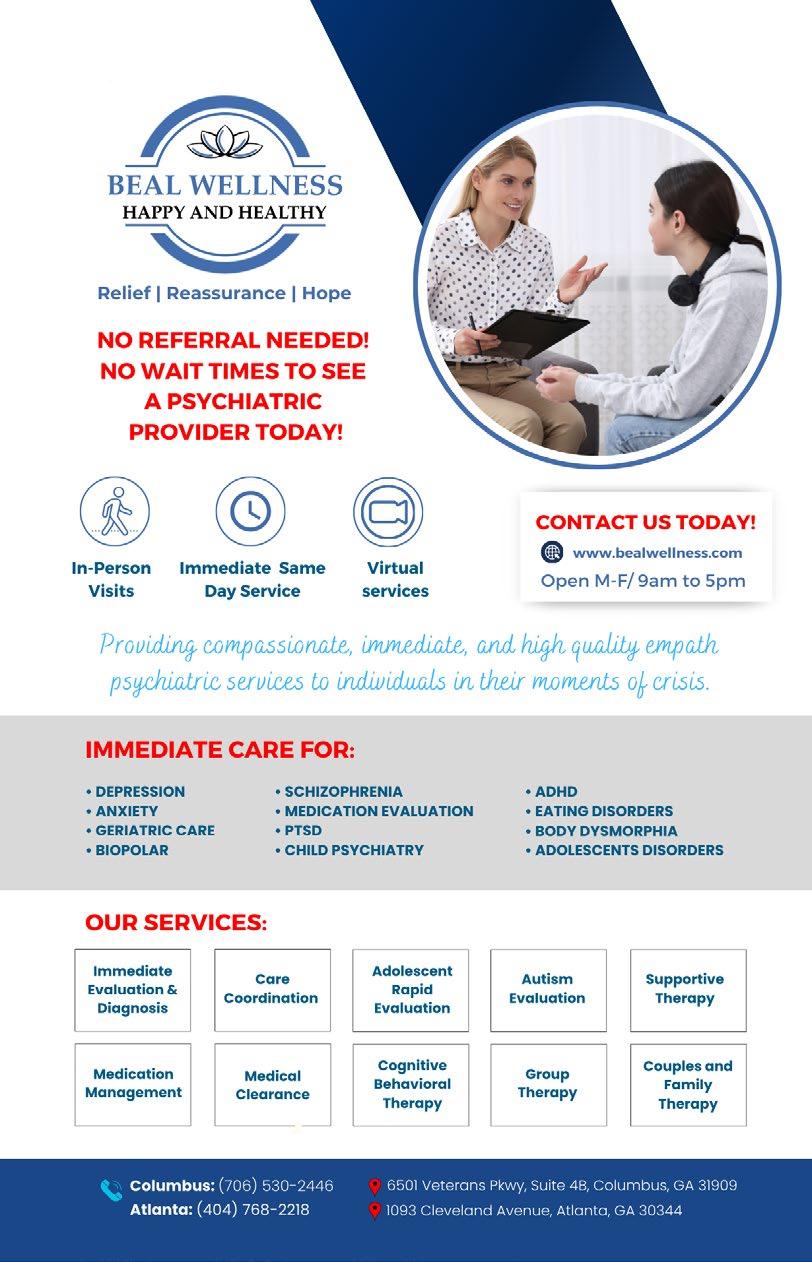


When you need heart care, count on St. Francis-Emory Healthcare’s outstanding cardiology team, technology, and advanced diagnostic and interventional cardiology services. As the area’s only open-heart cardiology program, St. Francis-Emory is proudly affiliated with Emory Cardiothoracic Surgery. We are the Valley’s premier resource for the diagnosis and treatment of heart disease.
Many factors play a role in keeping your heart healthy. If you have questions about your heart health, get answers about your risks from St. Francis-Emory Healthcare.
Take our free heart health assessment today.